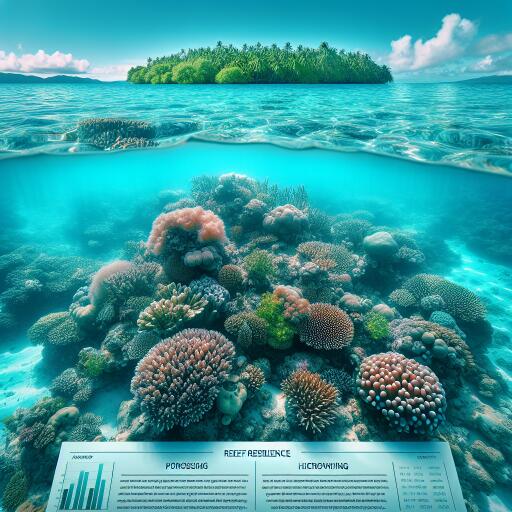
Reviving Palau’s Coral Sanctuaries: A Beacon of Hope for Marine Conservation
In the heart of the Pacific, the island nation of Palau is witnessing a promising resurgence of its coral reefs, demonstrating the remarkable resilience of nature when given a chance to recover. This surge in coral health is elaborated upon in a recent study by the Reef Resilience Organization, shedding light on the positive outcomes of Palau’s robust marine conservation strategy, particularly following a devastating coral bleaching event over a decade ago.
Palau’s journey to rejuvenate its marine life commenced with the establishment of the Protected Areas Network (PAN) in 2003. This pioneering initiative was designed to safeguard the diverse marine ecosystems of Palau through a series of marine reserves. These reserves emerged in response to the catastrophic bleaching of 1998, which significantly impacted Palau’s coral reefs. The PAN was meticulously crafted based on scientific knowledge, targeting essential areas for protection founded on biodiversity, habitat significance, and resilience against threats.
The network today boasts 36 protected zones, with the majority dedicated to marine conservation. These areas benefit from stringent management protocols and financial backing through a Green Fee levied on visitors, demonstrating a novel approach to funding conservation efforts.
Thanks to the efforts of the Palau International Coral Reef Center (PICRC), evidence points towards a notable recovery of coral populations, especially in deeper regions. This resilience is attributed to the survival of coral remnants and the influx of new coral from areas less impacted by bleaching. PAN’s success is rooted in a multifaceted strategy that includes minimizing human-induced stressors such as land-based pollutants, which are detrimental to coral health. By fostering robust populations of herbivorous fish, the program ensures that algae, which can overwhelm corals, remains controlled, thereby facilitating the regrowth of coral habitats.
Continuous monitoring plays a pivotal role in PAN’s effectiveness, enabling an ongoing assessment of reef health and resilience. This data is invaluable for refining management practices and adapting strategies to meet emerging challenges head-on. Flexibility is a key feature of the PAN, allowing for adjustments in protected areas based on new scientific insights, ensuring the network’s objectives are consistently met.
Crucially, the success of Palau’s marine reserves underscores the significance of community involvement in conservation efforts. The engagement of local populations, including the noteworthy participation of women in fisheries and habitat restoration endeavors, has been instrumental in bolstering the ecological recovery and sustainability of the reefs.
Despite these encouraging signs of recovery, the battle against environmental threats, particularly the looming specter of climate change, is far from over. The 2019 Palau State of the Environment report underscores the persistent challenges facing the region, highlighting the urgent need for continual vigilance and proactive management to ensure the long-term health and resilience of Palau’s coral ecosystems.
The story of Palau’s marine reserves serves as an inspiring model for global coral conservation, illustrating the potential for marine reserves to foster significant ecological recovery when guided by scientific principles and supported by comprehensive management and community involvement. As the world grapples with escalating marine environmental issues, the achievements of Palau’s Protected Areas Network offer a hopeful perspective on what can be accomplished through dedication, research, and global cooperation in marine conservation.





Leave a Reply